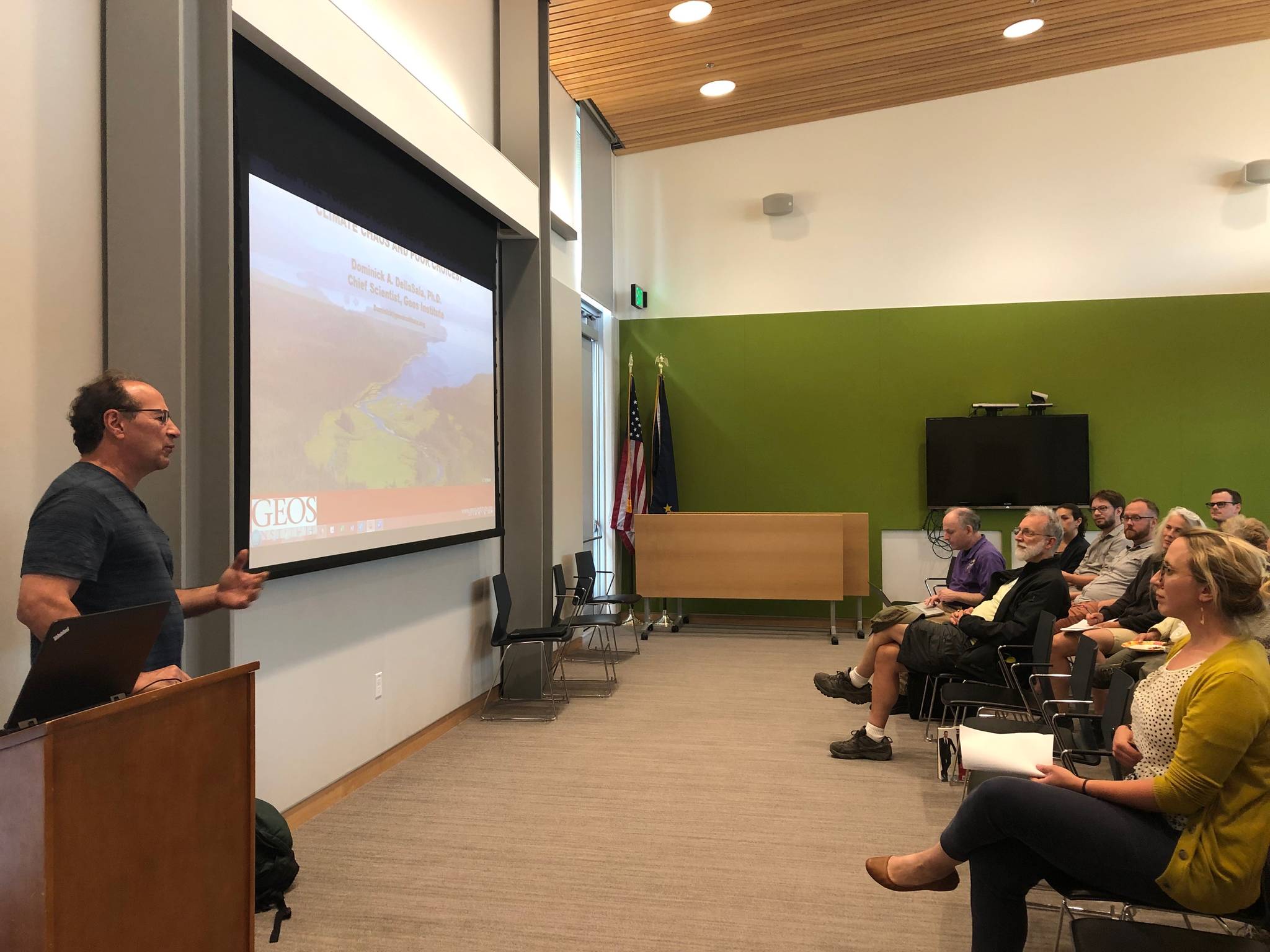Can the Tongass save Alaska from climate chaos?
Dr. Dominick DellaSala, president and chief scientist at the Geos Institute in Ashland, Oregon, asked that question to the small audience of about two dozen gathered in the Mendenhall Valley Library Tuesday evening.
He speaking at at an event hosted by the Southeast Alaska Conservation Council about the role that old-growth forest like the Tongass National Forest can play in combating climate change.
Temperate rain forests like the Tongass soak up an incredible amount of carbon and play a pivotal role in keeping the planet’s temperature at sustainable levels. In answer to his own question, DellaSala said that the Tongass can play a part in saving Alaska from climate chaos, so long as it continues to exist in its present state.
That may be a problem as the Alaska’s logging industry is eager to get at the hundreds of thousands of acres of old-growth forest in Southeast. “Old-growth” forests are not simply forests with old trees, but forests with a complex array of features which create a unique ecosystem which have remained mostly undisturbed by humans.
“Trees are a big stick of carbon,” DellaSala said, “they’re air filtration systems and they’re water towers.” Trees suck up carbon and expel oxygen and according to DellaSala, when a tree dies or is cut down, it releases its stored carbon.
“Think of the forest as a big bucket,” he said, “a bucket with holes. When trees die they emit carbon. Sixty percent of a tree’s carbon is released by logging and manufacturing.”
The issue for conservationists like DellaSala and SEACC is that they feel that what’s commonly referred to as the “Roadless Rule” is under attack. Roadless area conservation prohibits road construction and logging on certain areas of National Forests.
In 2018 the U.S. Forest Service announced that it would “develop a state-specific roadless rule focused on the Tongass National Forest.” That would allow exceptions to the roadless rule in the Tongass to be made, “to further Alaska’s economic development needs,” according to an announcement from the Forest Service.
However, conservationists argue that there is no need to alter the Roadless Rule, and that a “wall of wood” is coming. The wall of wood refers to large areas of young-growth forest, typically 55-70-year-old trees, according to DellaSala, which will soon become mature enough for harvest.
U.S. Sen. Lisa Murkowski, R-Alaska, told the Empire in an interview that there was a need to maintain harvesting, “some level of old-growth before you can intersect with what we know is coming.”
Murkowski said that the logging industry in Southeast is transitioning to young-growth forests but that the existing infrastructure is suited for old-growth.
“The investments are being made, but what we have done is we have moved away from diversification of product to one narrow product,” Murkowski said of the logging industry.
The Forest Service recently completed a two-year inventory survey of young-growth in the Tongass and conservationists argue that there is enough lumber in those areas to support the logging industry without disturbing old-growth forests.
“Alaska has the highest velocity of climate change,” DellaSala told the crowd. Alaska is a “global leader” in experiencing the effects of climate change.
“They’re anchoring the whole ecosystem,” DellaSala said of old-growth forests. “They’re full of big trees that are storing carbon. The Tongass is number one in the country for storing carbon. (There’s) quite a supply of young growth forest out there that can support the (logging) industry.”
• Contact reporter Peter Segall at 523-2228 or psegall@juneauempire.com.

